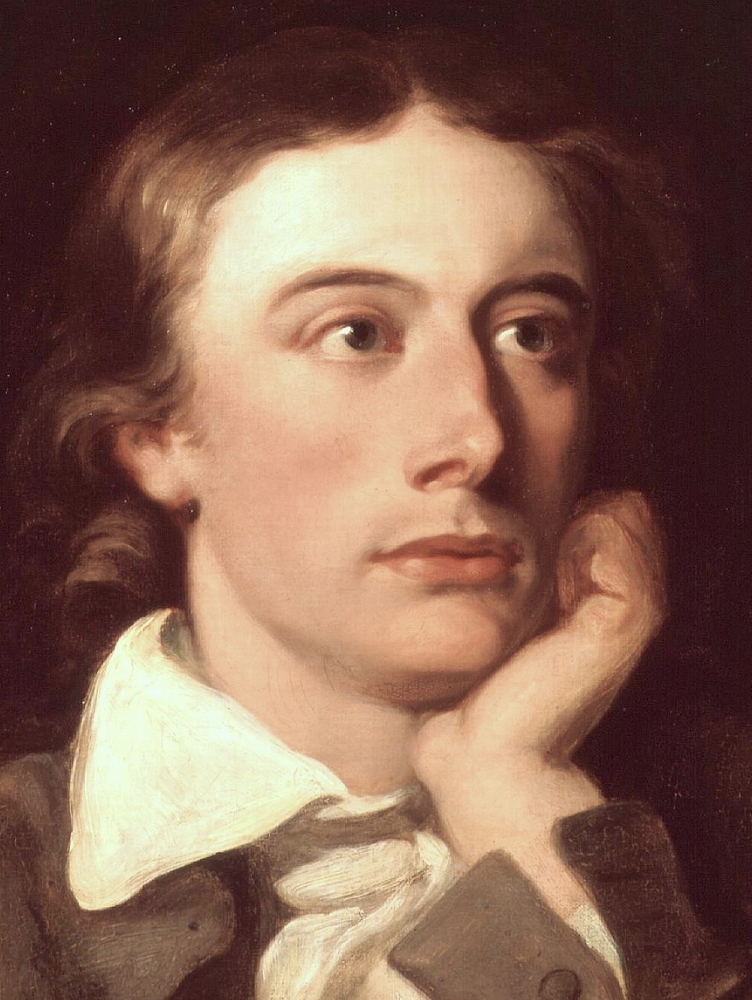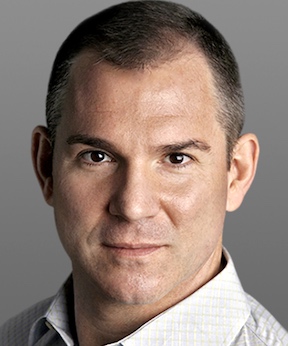October 31
John Keats

On this date in 1795, Romantic poet John Keats was born in London, the son of a livery stable manager. His father died in an accident in 1804 and his mother died of tuberculosis in 1810. Keats’ childhood was very unsettled but he was educated at Clarke’s School in Enfield and apprenticed to be a surgeon-apothecary. He studied surgery in London but was inclined to pen verses instead of taking notes during class.
His first real poem was written in 1814. He met Leigh Hunt, editor of The Examiner, and through him met other Romantic poets, including Shelley. Keats’ first book, Poems, was published in 1817. His first long poem, Endymion, was published when he was 21, followed by some of his most famous poems, including “Ode to a Nightingale” and “Ode on a Grecian Urn.”
In 1818 he nursed his brother as he was dying of tuberculosis and started work on “Hyperion.” His second volume of poetry appeared in 1820 to critical acclaim. By then he was ill himself with tuberculosis and depressed over his thwarted romance with Frances (Fanny) Brawne, a spirited young acquaintance who considered Keats too poor to be marriageable. Keats’ death was a tortured, drawn-out ordeal of more than a year. He ended his days in Italy.
Although invited by Shelley to visit him in Pisa, Keats instead traveled to Rome, where he died in 1821 at only 25, requesting of a friend that his tombstone be engraved with only one line: “Here lies One whose Name was writ in Water.” (But it contained more words than that.) His last years and his relationship with Brawne were chronicled in the 2009 film “Bright Star.”
Keats was a critic of religion who eschewed religious ritual before his death and expressed his views in his many letters against “the pious friends of Religion” (cited in The Encyclopedia of Unbelief, ed. Gordon Stein, 1985). His 1816 poem “Written in Disgust of Vulgar Superstition” said Christianity was “dying like an outburnt lamp.” (D. 1821)
IMAGE: Keats portrait by William Hilton, National Portrait Gallery, London.
“I have been astonished that Men could die Martyrs for religion – I have shudder’d at it – I shudder no more – I could be martyr’d for my Religion – Love is my religion – I could die for that – I could die for you.”
— Keats' letter to Fanny Brawne (Oct. 13, 1819)
Frank Bruni

On this date in 1964, journalist and author Frank Anthony Bruni Jr. was born in White Plains, N.Y., to Leslie (Frier) and Frank Bruni Sr. His father was the eldest child of relatively poor immigrants from southern Italy. English was his second language. He married his high school sweetheart, graduated on a full scholarship from Dartmouth College, served a U.S. Navy hitch and embarked on a long public accounting career in which he rose through the ranks to positions of wealth and prominence.
Frank Jr. grew up in New York and Connecticut with two brothers and a sister, then earned a B.A. in English from the University of North Carolina at Chapel Hill and a master’s in journalism from Columbia University in New York. After reporting jobs at the New York Post and Detroit Free Press, in 1995 he joined the New York Times, where his various roles over time included reporter, op-ed columnist, White House correspondent, Rome bureau chief and chief restaurant critic.
As the Times’ first openly gay op-ed columnist, Bruni was honored in 2016 by the National Lesbian and Gay Journalists Association with an award for his contributions to LGBTQ+ equality. He told his mother but not his dad when he was 17 that he was gay. “She implored me not to tell him — too risky, she said — and to let her handle it. A few years later, she informed me that she’d done so, and that was that. Dad said nothing to me. I said nothing to him.” (“A Father’s Journey,” New York Times, Dec. 22, 2012)
Bruni wrote that after his mother died at age 61 in 1996, “all the parenting fell to Dad. He tapped reserves I’d never imagined in him. When I broke up with the man he’d been so effusive toward, he must have told me six times how sorry he was about that. It was a message — that he was rooting for my happiness, no matter how that happiness came to me.” He admitted to his dad he felt guilty about burdening him with his unconventional sexuality. “He shook his head: ‘I almost think I love you more for it — for being what you are rather than what was expected of you.’ ” (Ibid.)
He became a full professor in 2021 at Duke University in North Carolina, teaching media-oriented classes in the Sanford School of Public Policy while continuing to write a weekly newsletter and occasional essays for the Times. In his newsletter on April 10, 2025, he wrote how during a panel discussion at the University of North Carolina, “I alone didn’t profess a belief in God or locate my morality in any formal creed. … Where, absent religion, did I find meaning in life? That question wasn’t put to me in exactly those words. But it was the gist of many of the prompts that came my way, and I struggled to respond to them, maybe because the audience’s skepticism about me was palpable, maybe because the hour was late.”
Instead, he added, he should have said: “I find meaning in a catchy melody. I find meaning in an artful turn of phrase. I find it in an entirely unnecessary kindness that I extend to someone or a wholly volitional gesture of courtesy that someone extends to me. I guess I’m saying that I find meaning in beauty — in our instinct and ability to fashion moments of grace that have nothing to do with survival and everything to do with transcendence.”
He was a finalist for the 1992 Pulitzer Prize in feature writing for his profile of a convicted child molester. He has written extensively about religion, and among his seven books as of this writing is “A Gospel of Shame: Children, Sexual Abuse, and the Catholic Church” (1993), co-written with Elinor Burkett. The most recent is “The Age of Grievance” (2024), an examination of America’s political dysfunction and culture wars.
Bruni respects people of faith and salutes the works of compassion and social justice that many of them and their congregations engage in, but he’s also fully aware of religion’s negative aspects. He has pushed hard against the contention that civil rights for gay persons are a threat to religious liberty. “Equality is increasingly being enshrined into law, and one response from those opposed to it is that the law shouldn’t apply to them. Why? Because it contradicts their religious beliefs, which they use as a fig leaf for intolerance.
“Why should a merchant whose version of Christianity condemns homosexuality get to exile gays and lesbians? Baking a cake, arranging roses, running an inn: These aren’t religious acts, certainly not if the establishments aren’t religious enclaves and are doing business with (and even dependent on) the general public. Their owners are routinely interacting with customers who behave in ways they deem sinful. They don’t get to single out one group of supposed sinners. If they’re allowed to, who’s to say they’ll stop at that group?” (Ibid., “Your God and My Dignity”)
He has called the pledge of celibacy a cruel, corrosive trap “falsely promising some men a refuge from sexual desires that worry them. … In a world that has often convinced these men that they’ll be outcasts, the all-male priesthood can seem like a safe haven…” (“The Wages of Celibacy,” New York Times, Feb. 25, 2013)
Bruni made a cameo appearance in Nora Ephron’s 2009 movie “Julie & Julia” three years before she died. He dedicated his 2017 book “A Meatloaf in Every Oven,” co-written with Jennifer Steinhauer, to Ephron.
“I support the right of people to believe what they do and say what they wish — in their pews, homes and hearts. But outside of those places? You must put up with me, just as I put up with you.”
— "Your God and My Dignity" (New York Times, Jan. 10, 2015)
